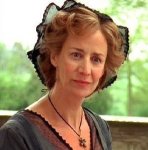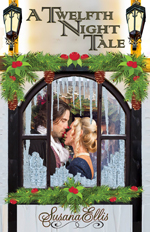Introducing Mrs. Barlow
Mrs. Leah Barlow, mother of five lovely daughters herself, has graciously condescended to provide Susana’s Parlour with some of her tasteful advisements on housewifely matters, such as meal planning and the rearing of children, in hopes that our readers will find them informative. Having recently set up a Twitter account where she will be sharing her most treasured household tips, she hopes many of you will follow her: https://twitter.com/lucybarlowsmom
Much of her advice comes from this manual, which she insists should be in every housewife’s possession:
The Cook and Housewife’s Manual, Containing the Most approved Modern Receipts for Making Soups, Gravies, Sauces, Regouts, and All Made-dishes; and for Pies, Puddings, Pickles, and Preserves; Also, for Baking Brewing, Making Home-made Wines, Cordials, &c.
Mrs. Margaret Dods (Christian Isobel Johnstone), Edinburgh, 1826
Bills of Fare
As landmarks to the inexperienced housekeeper, we subjoin a few bills of fare, observing, at the same time, that these must, in every instance, be let to individual taste and discretion. Bills of fare may be varied in endless ways,—nor can any specific rules be given for selecting dishes for the table, which must depend wholly on fortune, fashion, the season of the year, local situation, and a variety of circumstances. Neatness and propriety alone are of universal obligation in the regulation of every table, from the humblest to the most splendid. To the credit of the age it may be remarked, that modern fashion inclines more to a few dishes, well selected and elegantly disposed, than to that heterogeneous accumulation of good things with which notable British housewives used to conceal their table-linen.
…
The manner of laying out a fashionable table is nearly the same in all quarters of the united kingdoms; yet there are trifling local peculiarities to which the prudent housewife in middle life must attend. A centre-ornament, whether it be called a dormant, a plateau, an epergne, or a candelabra, is found so convenient, and contributes so much to the good appearance of the table, that a fashionable dinner is now seldom set out without something of this kind.
…
…[O]ne important art in housekeeping is to make what remains over from one day’s entertainment contribute to the…next day’s repasts. This is a principle understood by persons in the very highest ranks of society, and who maintain the most splendid and expensive establishments… [V]egetables, ragouts, and soups, may be re-warmed; and jellies and blancmange remoulded, with no deterioration of their qualities. Savoury or sweet patties, potted meats, croquets, rissoles, vol-auvents, fritters, tartlets, &c., may be served with almost no cost, where cookery is going forward on a large scale…
At dinners of any pretension, it is understood that the first course shall consist of soups and fish, succeeded by boiled poultry, ham or tongue, roasts, stews, &c.,; and of vegetables, with a few made-dishes, such as ragouts, curries, hashes, cutlets, patties, fricandeaus, &c., in as great variety as the number of dishes permits; as a jelly and a cream, a white and a brown, or a clear and a stew-soup. For the second course, roasted poultry or game at the top and bottom, with dressed vegetables, omelets, macaroni, jellies, creams, salads, preserved fruit, and all sorts of sweet things and pastry, are employed. This is a more common arrangement than three courses, which are attended with so much additional trouble both to the guests and servants.
But whether the dinner be of two or three courses, it is managed nearly in the same way… In the centre, there is generally some ornamental article, as an epergne with flowers, real or artificial, or with a decorated salad… Two dishes of fish dressed in different ways, if suitable, should occupy the top and bottom; and two soups, a white and a brown, or a mild and a high-seasoned, are best disposed on each side of the centre-piece: the fish-sauces are placed between the centre-piece and the dish of fish to which each is appropriate; and this, with the decanted wines drank during dinner, forms the first course. When there are rare French or Rhenish wines, they are placed in the original bottles (uncorked) in ornamented wine-vases, at the head and bottom of the table,—that is, between the centre-piece and the top and bottom dishes; or if four kinds, they are ranged round the plateau.
The Second Course, when there are three, consists of roasts and stews for the top and bottom, Turkey or fowls, or fricandeau and ham garnished, or tongue, for the sides; with small made-dishes for the corners, served in covered dishes; as palates, stewed giblets, currie of any kind, ragout, or fricassee of rabbits, stewed mushrooms, &c. &c. Two sauce-tureens, or glasses with pickles, or very small made-dishes, may be placed between the epergne and the top and bottom dishes; vegetables on the side-table are handed round…
The Third Course consists of game, confectionary, the more delicate vegetables dressed in the French way, puddings, creams, jellies, &c.
Water-bottles, with rummers, are placed at proper intervals. Malt liquors and other common beverages are called for; but where hock, champagne, &c. &c. are served, they are handed round between the courses. When the third course is cleared away, cheese, butter, a fresh salad, or sliced cucumber, are usually served; and the finger-glasses, where these disagreeable things continue to be openly used, precede the dessert. At many tables, however, of the first fashion, it is customary merely to hand round quickly a glass vessel or two filled with simple, or simply perfumed tepid water, made by the addition of a little rose or lavender water, or a home-made strained infusion of rose leaves or lavender spikes. Into this water each guest may dip the corner of his napkin, and with this (only when needful) refresh his lips and the tips of his fingers…
The Dessert may consist merely of two dishes of fine fruit for the top and bottom; common or dried fruits, filberts, &c. for the corners or sides, and a cake for the middle, with ice-pails in hot weather. Liqueurs are at this stage handed round; and the wines usually drank after dinner are placed decanted on the table along with the dessert, and the ice-pails and plates removed as soon as the company finish their ice. Where there is preserved ginger, it follows the ices; or is eaten to heighten to the palate the delicious coolness of the dessert wines.
About A Twelfth Night Tale
Without dowries or the opportunity to meet eligible gentlemen, the five Barlow sisters stand little chance of making advantageous marriages. When Lucy, the eldest, attracts the attention of a wealthy viscount, she knows she should encourage his attentions, since marriage to a peer will be advantageous to all. The man of her dreams was Andrew Livingston, her best friend’s brother. But he’s always treated her like a child, and now he’s betrothed to another. Perhaps the time has come to accept reality… and Lord Bexley.
Andrew returned from the Peninsular War with a lame arm and emotional scars. Surprisingly, it’s his sister’s friend, “little Lucy”—now a strikingly lovely young woman—who shows him the way out of his melancholy. But with an eligible viscount courting her, Andrew will need a little Christmas magic to win her for himself.










What a delightful post!! And helpful considering the first scene of my book takes place at the dinner table.
LikeLike
I’m the queen of leftovers, so I heartily approve.
LikeLike